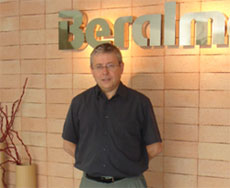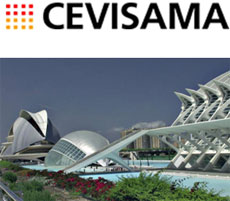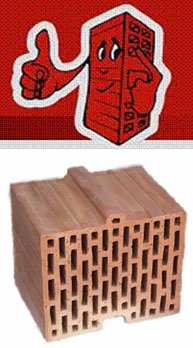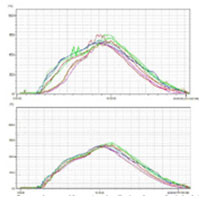|
Reading time approximately: 5 minutes
CORPORATE
Interview with Ramon Sarió, ceo of Beralmar

Ramón Sarió, together with Cristóbal Caparrós, has been the CEO and dominant shareholder in BERALMAR since 1982. We asked him to tell us his opinions on issues relating to the ceramic industry and BERALMAR, a company that has experienced constant, steady growth in recent times.
BERALMAR NEWSLETTER. What have been the key factors in Beralmar’s growth?
RAMÓN SARIÓ: Without a doubt, the development of new products and the opening of new markets. As a result of the company’s specialisation and the efforts of the R+D department, many new combustion systems have been developed, which has led to increased productivity for many clients.
For many years, we have worked to open new markets. It is a very slow and costly process, but very gratifying when a market matures. Our policy is to be present in our chosen markets, which today number about 50, to know our clients’ needs and to generate confidence so we can sell our products when the client needs them.
BN: It seems that an important modernisation process is underway in many areas of the world. How do you think this could affect suppliers in the ceramic sector?
RS: We are at a point where the economies of many parts of the world are working well. In many countries, the demand for bricks and tiles is high, and it is therefore necessary to satisfy the housing demand that has built up over a long time. This means that the industries within the sector need to increase productivity and are generating a demand for new equipment.
The ceramic industries do not, however, just want to purchase equipment; they need the help of suppliers who will make the investment profitable and who will become strategic suppliers for their present and future growth. We, as suppliers, need to have a high level of specialisation to be able to provide the added value asked of us.
BN: The energy factor represents an ever-greater proportion of manufacturing costs. What solutions can BERALMAR offer?
RS: We are talking about an energy that has been expensive and in short supply for a long time. What BERALMAR is offering the ceramic sector is a series of measures and actions to optimise consumption of the energy used in drying and firing processes and in the use of alternative energies.
To optimise consumption, we apply technology to reduce the firing cycles, improve efficiency and recover energy, using high-speed, cold flame burners, assorted air recirculation equipment and process control.
The concern for rationalising the use of energy has led us to develop, for example, the PRESTHERMIC model kiln, which is hermetic and allows us to reduce consumption by 10% compared to a traditional kiln tunnel, as well as offering other quality and production benefits.
BN: BERALMAR is typified by a wide range of burners for all types of fuel and has always been interested in developing equipment for alternative fuels (biogas, biomass, etc.). What future do you see for these fuels?
RS: Today, BERALMAR is the manufacturer that offers the most complete range of combustion systems on the market, using various types of fuel, such as natural gas, propane gas, biogas, fuel oil, gasoil, other petroleum derivatives, coal, petroleum coke and solid vegetable fuels.
The sector needs other fuels so it does not have to rely so heavily on gas and fuel oil. In times of cheap energy, nobody thinks about alternative fuels. The suppliers don’t have to force themselves to research, because the only thing that matters is the price at the time. The authorities did not have a mid-term energy policy and much time has been lost.
I believe in fuels such as biogas, which are non-polluting and economical, but the authorities in the different countries need to promote the use of these fuels by facilitating the installation of digesters. Petroleum coke, managed with appropriate technology, is a suitable fuel for the ceramic industry, with growing production levels and a highly attractive price. It is now used by almost everybody. We already have the appropriate technology to be able to use solid vegetable fuels; the difficulty lies in guaranteeing the supply.
BN: Finally, how do you imagine BERALMAR in 10 years time?
RS: BERALMAR will be a leading supplier for a ceramic sector with a bright future ahead of it as bricks and tiles are, and will continue to be, fundamental construction materials.
I imagine BERALMAR with a much higher volume of sales, as a result of its achievements throughout the world and the experience it has accumulated. In short, the scenario we envisage is a projection of the success experienced in recent years.
I also think that the environment will have changed greatly and that few, or even none, of our current products will still be used. We will apply new technologies to generate new products. We often think that everything has been done, but I believe that everything is still to be done.
|
|
Beralmar exhibits at the CEVISAMA 2008 tradeshow in Valencia

As usual, BERALMAR will have its own stand at the CEVISAMA 2008 trade fair, which is to be held in the Feria de Valencia exhibition centre from 5-9th February, 2008.
CEVISAMA is a trade fair for all kinds of construction materials and boasts the greatest attendance by suppliers of machinery for the Spanish ceramic industry.
BERALMAR will be located on Level 1, Pavilion 5, Stand B 53. We ask all those interested in receiving an invitation to this event to contact Carme Posas (carme.posas@beralmar.com)
|
NEWS AND ACHIEVEMENTS
Start-up of a new tunnel kiln in Hungary

BERALMAR has successfully installed a new tunnel kiln for the Hungarian ceramic company PÁPATESZÉRI TÉGLAIPARI Kft., located in the area of Pápateszer, in the northeast of the country.
The new kiln, which is 76 metres long, is a PRESTHERMIC model. This type of kiln, thanks to its hermetically designed, metallic casing, allows work to be carried out at high pressures without losing energy, resulting in a significantly lower specific consumption than that of traditional kilns.
The main fuel used in this new installation is natural gas, which will be used to fire up to 260 tonnes/day of thermoclay blocks and variously sized perforated bricks.
Along these lines, we would like to thank the people at PÁPATESZÉRI TÉGLAIPARI Kft. for their continued confidence in BERALMAR, for trusting us, once again, to meet their expectations.
|
|
Cold flame burners, the proven advantages

Example of the firing curve, before and after the installation of cold flame burners.
After two years marketing the new model FOC20/FF high-speed, cold flame burners, BERALMAR has proven how effective these burners are at achieving the objectives that led to their development.
Cold flame burners are installed between the preheating burner and the flue, thanks to their ability to work in temperatures between 400 and 600şc, despite the large quantity of air that is injected. They contribute to equalling temperatures in the stack and offer a less aggressive form of preheating, preventing breakages and allowing a higher firing rate.
More than 20 kilns in Spain now work with this type of burner, the most recent examples of which are HIJOS DE F. MORATAL (Villalonga, Valencia) and PROINCER (Elx, Alicante).
|
THE CERAMIC INDUSTRY
SILENSIS, the new brand of ceramic sound insulation equipment

The Spanish Association of Brick and Tile Manufacturers, HISPALYT, of which BERALMAR is a member, has launched the SILENSIS brand, which encompasses all construction systems using ceramic bricks, which adhere to the Technical Building Code.
The SILENSIS construction systems are the result of joint research by HISPALYT, the CSIC (Higher Scientific Research Centre) Acoustic Institute and the LABAIN Technology Centre. Using SILENSIS systems, dividing walls between houses benefit from in situ sound insulation of between 50 and 55 dB.
HISPALYT has organised a training programme for associated manufacturers, run in parallel to promotion of the SILENSIS brand by way of television advertisements and publicity in football stadiums.
The launch of the SILENSIS brand comes within the framework of the ceramic industry’s belief that added value is the key to growth in the sector.
|
|
|
|

